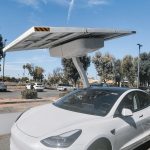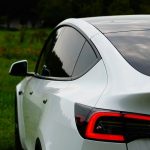On a Manhattan rooftop, a refrigerator-sized device quietly produces gasoline not from oil but from the air around it, reflecting a shift in how some innovators address transportation emissions. While most automakers focus on electric vehicles, Aircela targets the significant majority of the global car fleet still powered by gasoline and diesel. Instead of pushing drivers to abandon existing vehicles, the company offers an alternative fuel made using direct air capture technology and renewable energy. This approach could find traction among commercial fleets and industries that require liquid fuels and cannot easily make the leap to electrification, such as long-haul trucking and motorsports. As decarbonization remains urgent, pragmatic solutions for existing vehicles have garnered attention beyond typical EV-focused initiatives.
News coverage in past years regarding sustainable fuels has typically centered on large-scale synthetic fuel projects by companies like Porsche or initiatives in the aviation sector. In most instances, efforts were focused on centralized production facilities and complex infrastructure requirements, and there was skepticism about economic and environmental feasibility at smaller scales. Aircela’s rooftop demonstration contrasts with earlier models by emphasizing decentralized, modular deployment and immediate compatibility with today’s engines, while still facing familiar challenges around scaling, cost, and regulatory acceptance.
How Does Aircela’s Technology Work?
Aircela’s device operates by capturing carbon dioxide from the air using a net made of plastic and nylon, then converting the captured CO2 into liquid fuel through a multi-step process powered by renewables. The system separates CO2 and recombines it with hydrogen to form methanol, which is refined into ready-to-use gasoline. Production currently yields about one gallon of gasoline per day per machine, with each gallon corresponding to 10 kilograms of CO2 removed from the atmosphere.
What Markets Is Aircela Targeting?
The startup plans to manufacture between 50 and 100 units for field deployments over the next two years. Aircela has drawn interest from automakers, including a recent demonstration for Jaguar Land Rover, and is in discussions with both U.S. and German vehicle manufacturers. Niche applications such as motorsports and heavy transport, sectors that have not yet widely adopted electrification, are additional targets for early adoption of the technology.
What Challenges Does the Company Face?
Skepticism remains about whether small-scale air-to-fuel conversion can be cost-effective, with concerns about energy requirements and commercial viability voiced by observers and potential customers. The company’s leadership acknowledges these challenges and is focused on empirical validation and certification, aiming to build trust by providing working products and subjecting its fuel to independent testing.
“From a customer standpoint, there’s no need to modify engines or change how vehicles operate. We’re simply changing how the fuel itself is made, which allows us to decarbonize transportation without forcing customers into entirely new systems,”
explained Eric Dahlgren, Aircela’s CEO.
Aircela asserts that the energy needed for their process is less than the typical grid input for EV charging, particularly in regions where grids are still fossil-fuel-based. While profitability is not the immediate focus, the company’s approach hinges on bridging the gap between current internal combustion fleets and long-term goals of full electrification. Plans for mass production are underway, with a modular design intended to facilitate scaling and adaptation without centralized facilities.
Aircela’s strategy stands out for bypassing the need for sweeping infrastructure changes while aiming to help reduce reliance on fossil fuels. Its decentralized production capacity and compatibility with conventional vehicles could appeal to operators looking for practical climate action without fleet overhauls. Nevertheless, questions about the economics and environmental impact at commercial scale will define future prospects. Readers seeking to evaluate low-carbon fuel options should consider energy sources, grid composition, and the importance of credible third-party validation before investing or adopting any new fuel technology.










